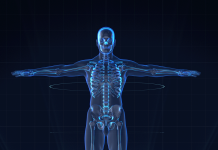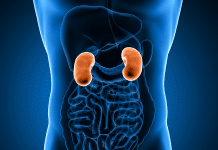Post-traumatic stress disorder or PTSD is a disorder that develops in an individual after experiencing a traumatic or horrific event.
The event may be a road accident, natural disaster, sexual harassment, physical assault, domestic violence, death of a loved one, a violent crime, war, or a terrorist attack. PTSD not only develops in individuals who directly experience such shocking events but may also develop in people who witness such events. Individuals who have experienced rape or sexual assault are more likely to develop PTSD. People who suffer from PTSD also suffer from other psychological problems.
About eight of every hundred people experience PTSD at some point in their lives. Women are at a higher risk of developing PTSD.
The symptoms of PTSD mostly appear within three months of the horrific event. The duration of symptoms varies in individuals. The symptoms include the presence of the following for at least a month: re-experiencing the event, flashbacks of the incident including an increase in the heart rate and sweating, avoidance of the thoughts that remind a person of the horrific experience, avoiding discussing about the traumatic event, getting easily scared, difficulty in sleeping and experiencing nightmares, recurring dreams, emotional detachment and distress, irritability, depressing thoughts, memory problems, development of destructive behavior, losing interest, and feeling guilty, shameful or angry. Acute stress disorder is a condition in which the symptoms go away before a month. But if the symptoms last more than a month, the state is PTSD.
PTSD can cause depression, increased risk of suicide, anxiety, panic attacks, usage of drugs and alcohol, the decline in the social interactions, difficulty in concentration leading to problems at the workplace or educational institution.
The symptoms are different in children below the age of six years. They include the wetting of the bed, being unable to talk, being scared all the time, development of phobias, irritability, aggression, getting overly attached to a parent, or developing disrespectful behaviors.
The risk factors of developing PTSD include the family history of PTSD, sexual assault, and experiencing traumatic events.
The treatment of PTSD includes finding the cause of the disorder. Psychotherapy or talk therapy is the primary treatment. Medications are also given to patients who have PTSD. Psychotherapy involves talking to a mental health expert. Psychotherapies help in educating the patient about the disorder and the symptoms. They help the patient in the management of the condition by identifying the factors that trigger the symptoms. One type of psychotherapy is cognitive-behavioral therapy, which allows the patient to change and deal with troublesome thoughts. It includes exposure therapy and cognitive restructuring.
Exposure therapy helps the patients to control fear by exposing them to trauma in a safe way. The therapist helps the patients to re-live the traumatic experience in a controlled environment. It helps the patient in combating fear and anxiety.
Cognitive restructuring helps people to get rid of the guilt and shame. Patients sometimes blame themselves for what is not their fault. The therapist helps people in dealing with those feelings.
Apart from that, group therapy is also beneficial. It includes sharing thoughts with other people who have experienced similar events.
There are different medications for the treatment of PTSD. The doctor prescribes them.
Other than the therapies and medications, caregivers and friends should offer their support to the patient. They should encourage the patient to get treatment and should learn about PTSD to identify the factors that trigger the symptoms.
Until Next Time,
Team Doctor ASKY!




















